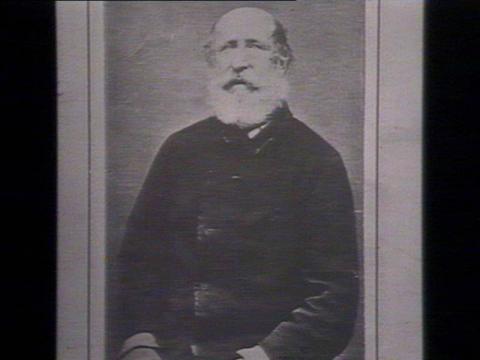 Below are some example first hand accounts written by people who new the Liardets. They provide a valuable and interesting insight into the character of these very special pioneers.
Below are some example first hand accounts written by people who new the Liardets. They provide a valuable and interesting insight into the character of these very special pioneers.
Written by: The English poet, Richard Howitt after meeting the Liardet family whilst stranded on the beach in April 1840.
"A tall, good-looking lady, attended by two children stood, almost before we had perceived them, at our fire. In one hand was a glass of port wine, and in the other a wine glass. 'Here,' said she, 'Hector, hand around the wine.' He did so. The port was especially good; better for the unexpectedness and the courtesy. 'Now, children,' said the mother,  'kindle a good fire on the beach to guide your father from William's Town.' The father, it seemed, had a boat, and was three miles off, which distance he had to come over the water in darkness and often storms. With what alacrity did those children make a large beacon fire; waiting long silently, then shouting welcome as the father came. At our fire, too, the tall, well-made, military-looking father soon presented himself. These people had not been long in the colony, were evidently superior persons, and were industriously supporting themselves and nine children. There needed little apology on their part that want of room only prevented us from being in their hut comfortably accommodated."
'kindle a good fire on the beach to guide your father from William's Town.' The father, it seemed, had a boat, and was three miles off, which distance he had to come over the water in darkness and often storms. With what alacrity did those children make a large beacon fire; waiting long silently, then shouting welcome as the father came. At our fire, too, the tall, well-made, military-looking father soon presented himself. These people had not been long in the colony, were evidently superior persons, and were industriously supporting themselves and nine children. There needed little apology on their part that want of room only prevented us from being in their hut comfortably accommodated."
Written by: Josephine Macdonald (nee Liardet)
When my father was going to take out a large fishing net called a seine he would go out with his guitar and play a piece called ‘The March Round the Village’ and that was the call for all our neighbours to come and see the big net drawn in, with a good-sized cartload of fish of great variety, and looking very pretty sparkling on the sands. We had an American coloured man as a cook and he used to bring down a harrow and take what fish he wanted to cook, for supper and next morning's breakfast; and then my father used to invite his friends to come in the boats for a row in the bay, leaving the men who hauled in the nets to put them away.
Written by: Georgiana McCrae's son describes Wilbraham Liardet in the 1841 procession official for Governor Sir George Gipps
“Grandest of all not even omitting the majors and captains who rode on his Excellency's staff was the Father of Sandridge and of Sandridge Pier, the progenitor of post offices and carrier-general of Her Majesty's mails, Mr W. Frank (sic) Evelyn Liardet. This gentleman attired in a white cavalry uniform, and mounted on a smart little grey, shone like a glittering star.”
Written by: Georgiana McCrae
“… A drizzlingly cold day — sat down to darn socks … Just as ‘blind-man's holiday had begun — and I had put away my work to prepare for tea-time — Heard a footstep on the Verandah — then a rapping on the door — I rose to open it and beheld — two wayfarers! Mr Liardet who begged a night's lodging for himself and his son Michael (St Clere) … We made Messrs Liardet welcome & tea soon was served — afterwards we were very much amused by Liardet père'sconversation.
Liardet is not only thoroughly educated, but even a highly accomplished as well as Aristocratic looking man. He sketches horses most admirably and was a Keen fisher and sporting man in old days … he is anxious to lease a portion of ‘Jamieson's Survey’ to have a Boat and Seine-net etc. His good nature — and seemingly inexhaustible store of Little Anecdotes' would make him a pleasant neighbour for us …”
Source
Hiscock, Michael, Wilbraham Frederick Evelyn Liardet Romantic Visionary of the Beach 1839–62, La Trobe Library Journal, Vol 13, No. 54, 1995, The Friends of the State Library of Victoria, p5 -10.
Images of Wilbraham and Caroline Liardet courtesy of the State Library NSW.
The Liardet story is a fascinating piece of pioneering history. It is one that offers a genuine insight into the people and times of early European settlement. There are numerous primary and secondary historical sources documenting this story which, I promise, will not disappoint should you wish to read further.
Further reading resources can be found in the Ballam Park Homestead article
